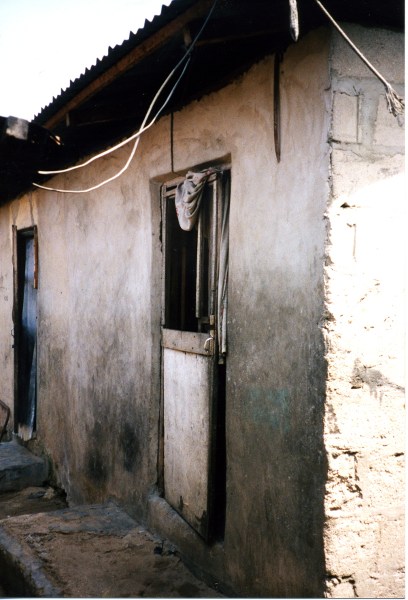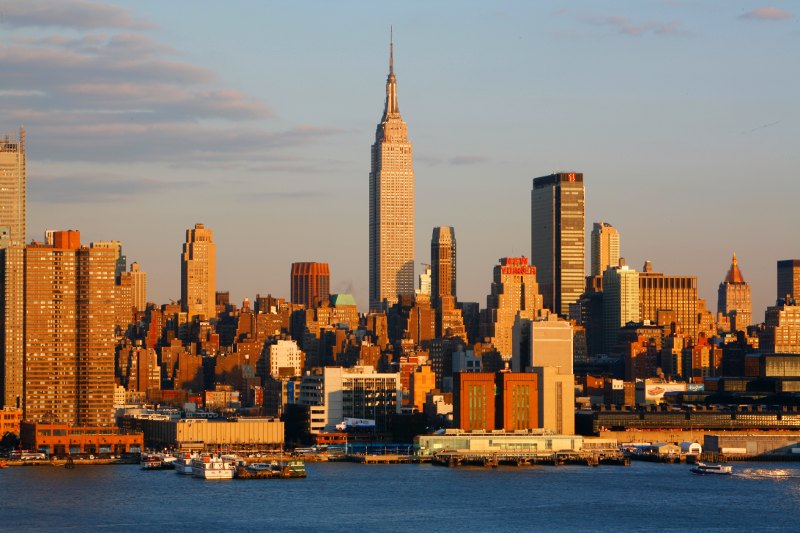Back from a recent trip to Canada and the United States, Fred Weston describes what he saw, the effects of the austerity measures on the social fabric of society, the cuts in education and health care, but also the reaction of the working class, such as the growing militant mood among teachers, nurses, refuse collectors...
The United States is the most powerful capitalist country in the world, and the single biggest market on the planet. It is a part of the world millions of poor people would love to emigrate to, as they dream of escaping the hell they live in in many South American, African and Asian countries. And millions have managed to get there, many illegally across the US-Mexican border.
The contrast between a city like New York in the USA and Lagos in Nigeria could not be greater. I remember being taken to Ajegunle, one of the poorest parts of Lagos. When I walked into the neighbourhood, for the first time in my life I felt that I was literally walking into a living hell.
New York and Lagos: two sides of the same coin
 Communal shower for a whole neighbourhood
Communal shower for a whole neighbourhood
I can remember visiting the humble house of workers. One house in particular struck me. I walked in and wondered where the kitchen was, where the bathroom was, where the wardrobe was... but there were none of these. The worker’s wardrobe was a couple of clothes hangers with one pair of spare trousers hanging up and one shirt. And the bed? No bed! A matt and a pillow on the floor was the bed. Water had to be fetched from some fountain some distance from the house. Oh, there was a shower... a communal one at the end of the neighbourhood, out in the open, behind some corrugated sheets.
 Child playing near open running sewage I saw children playing in dirt, with black water flowing down the road right where they were playing. I remember then thinking that such immense poverty existed in a country that was rich in oil, but none of the wealth produced by that oil is “filtering down” to these people.
Child playing near open running sewage I saw children playing in dirt, with black water flowing down the road right where they were playing. I remember then thinking that such immense poverty existed in a country that was rich in oil, but none of the wealth produced by that oil is “filtering down” to these people.
As I walked round Manhattan on my recent visit to the USA, I could not help thinking of what I had seen in Nigeria as I stared up at the Chrysler building, the Empire State building, the Trump Tower and all the other giant buildings that stand in endless rows, like symbols of the immense power that the USA is, and has been.
I also could not help but think that this immense power, and concentration of wealth, is based on the poverty that I had seen back in Nigeria. Where is the wealth that is being pumped out of Nigeria’s oil wells going, if not to multinational corporations, some of which have their fancy offices in places like Manhattan?
Growing debt in Canada
Before arriving in the USA I had been to Canada, where I spoke at meetings in Montreal and Toronto. In Canada the media boasts about the apparent good health of its banking system, which supposedly is less exposed to the storm that has hit the USA and Europe. Canada’s national budget deficit at the end of the last financial year stood at 44.8bn Canadian dollars, while its national debt has reached $814.26 billion, which represents 62.3 percent of GDP. That is a level more or less the same as the USA and countries like Germany and France, so there isn’t really much to boast about on this front.
And if one looks at the state of Canada’s Provinces, such as Quebec and Ontario one finds that there is even less reason to boast. Quebec’s debt stands at $285.6 billion, which is 94% of the province’s GDP. That is getting close to levels of debt like Greece and Italy. Ontario’s is doing somewhat better than Quebec… for now, with an overall public debt of around 37% of GDP. However, estimates indicate that over the next decade Ontario will be doing as badly as Quebec.
This explains why in such a seemingly rich country all people ever hear about is cuts in public spending and austerity packages. This comes on top of decades of pressure on the Canadian working class.
Quebec longer hours, lower wages
While travelling one day on the Montreal Metro I picked up the local freebie, Métro Montréal, and found some interesting statistics on the Province. The headline of the article read, “Quand travailler plus ne rapport pas plus – Les familles travaillent plus qu’avant, mai leurs gains diminuent” [When working more does not bring in more – Families work more than before but their incomes go down].
The figures provided by the article show the following. In the 30-year period between 1976 and 2006 the average amount of time of each family spent on working went up by 14 weeks per year. This was the result of more women going out to work, an increase in part time work and so on. Now, in this country of wealth and opportunity one would imagine that an extra 14 weeks work a year would provide families with a higher standard of living. On the contrary, according to the same article, 70% of families saw their incomes go down by 3% in real terms in the same period.
So where is the extra income generated going? The article explains that the wealthier families saw their incomes go up by 6%. Other interesting statistics are provided. At the end of the same 30-year period the top 10% of families were working less and earning more. This top 10% were working 6.5 weeks less than in 1976, while their incomes had gone up by 24%. Their overall share of national income went up from 53% to 59%. And at the bottom of this list of statistics, the poorest 10% saw their share of national income fall from 10% to 7%.
These statistics give a very clear picture of what the Canadian working class has had to suffer in the past 30 years. Working class families are having to work more to keep up their standard of living. Where 30 years ago one income in the average household could provide a reasonable living, now very often two have to go out to work, and in some cases the children also have to get evening, weekend or holiday jobs to get by.
What we see in Quebec is a squeezing of the working class, which is working longer hours and earning less in real terms, while at the other end of society, a minority of wealthy families are actually getting richer. Here in graphic terms we see the transfer of real wealth from one class to another. More surplus value has been squeezed out of the working class for this to be accumulated at the other end of the class divide. These statistics were confirmed to me in talking to ordinary working class people in Canada, who complained that they have so few holidays now compared to the past.
Ontario only one third of people actually have a pension
When I moved on to Toronto I was given the opportunity of speaking at a meeting of the Toronto Young New Democrats. The subject of the meeting was Britain after the elections and the impact of Blairism on the British Labour Party. Because of the historical links, there was a lot of interest in this question. I explained the process that had taken place in Britain over the past 30 years, which can be compared to the figures I quoted on Quebec above.
When I explained what is being done to the social security system in Britain, with the attacks on pensions and so on, one member of the public commented that in Ontario only one third of people actually have a pension. This is confirmed by official statistics that reveal the reduction of pension coverage from a high point in 1985 of just under 40% of Ontario workers to about 34.7% by 2005. In the private sector the coverage had gone down as far as 25% and since then it has further declined. This in Canada, considered one of the best places to live in the world!
There was a time when Canadians prided themselves at how much better their welfare system was compared to the one across the border. Now, as capitalism enters deeper into crisis, the two countries are starting to look more and more similar to each other.
USA from men on the moon to Deepwater Horizon
Having had a glimpse of Canada I moved on to the United States, where the social contradictions are even more glaring. The accumulation of wealth and power that has taken place over the past two centuries is clear wherever you go. At the same time, one also gets a feeling that here is a mighty power that has been in decline for some time.
Forty years ago this was the country that was putting men on the moon! Today it is the country of Hurricane Katrina and the disaster of Deepwater Horizon that has hit the Gulf of Mexico. Here is a powerful country that cannot even protect its own people, such as was the case in New Orleans a couple of years back.
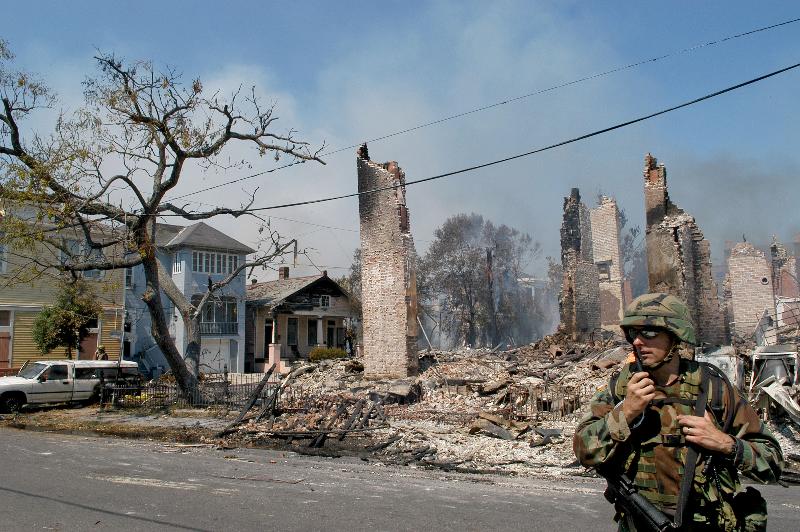 After Katrina. Photo by Amnar Abd Rabbo. I remember when that disaster struck and the pictures of poor New Orleans families were broadcast across the globe, our comrades in Nigeria commented that people in Africa were wondering whether what they were being shown was really taking place in the United States. The people affected were black, the conditions after the hurricane hit looked more like Africa, and the long delay in getting aid in also had a very African taste to it. But there was no escaping: this was the United States of America, the country many poor Nigerians pray to get a visa for!
After Katrina. Photo by Amnar Abd Rabbo. I remember when that disaster struck and the pictures of poor New Orleans families were broadcast across the globe, our comrades in Nigeria commented that people in Africa were wondering whether what they were being shown was really taking place in the United States. The people affected were black, the conditions after the hurricane hit looked more like Africa, and the long delay in getting aid in also had a very African taste to it. But there was no escaping: this was the United States of America, the country many poor Nigerians pray to get a visa for!
In the land of the “American Dream” we now have 15 million unemployed. The highest rate it has been at for the past 27 years. And in spite of the billions thrown at the banks, in spite of the stimulus packages, unemployment is not really going down. While I was in the USA figures were released that indicated that in the first quarter 431,000 jobs had been created... but 411,000 of these were thanks to the census which is due this year. These are temporary jobs that many youth have signed up for, but will only last a short while. The fact that only 20,000 real jobs could be created in this huge economy after the enormous stimulus packages implemented by the government is an indication of the real situation the economy is in.
Bank failures and growing poverty
While I was in the USA I read the New York Times. It is like reading a daily economic disaster bulletin. On May 28, I read the following headline “U.S. Bank Failure Total Is 77 as More Institutions Are Shut”. The article explained that, “Regulators on Friday shut down three affiliated banks in Florida and one each in Nevada and California, bringing the number of bank failures this year to 78.”
On May 30 I read another headline, “The New Poor - Blacks in Memphis Lose Decades of Economic Gains” which explained that,
“The median income of black homeowners in Memphis rose steadily until five or six years ago. Now it has receded to a level below that of 1990 — and roughly half that of white Memphis homeowners, according to an analysis conducted by Queens College Sociology Department for The New York Times.”
On June 2 there was one article, “Jobs Bill Vs. Deficit, A Showdown”, which made very gloomy reading indeed. It explained that the US deficit is projected to reach $800 billion over the next five years, but that is only if Congress approves spending cuts and a repeal of tax cuts that Bush had pushed through – to the value of $200 billion. The article explained that big cuts are required in the Social Security system and in Medicare. So much for Obama’s promised healthcare reforms! This is all so that the overall deficit can be kept to $600 billion by 2015.
As the article states, “...Congress doesn’t just need to cut $200 billion by 2015. It needs to do that and then find more cuts for 2016, yet more for 2017 and vastly more for the decades that follow.” There in a nutshell we have the future of the US working class: decades of austerity!
The US bourgeois face a dilemma that they cannot resolve. On the one hand they cannot allow public spending to get out of control. On the other, if they do implement severe austerity packages, this will cut across the already very feeble “recovery”. The article points out that, “The Congressional Budget Office estimates that 1.4 million to 3.4 million people now working would be unemployed were it not for the stimulus.” It then goes on to explain that a cut in public spending could increase the risks of a double-dip recession.
Even if in the next four years job creation were to speed ahead at the same pace as the best years of the boom in the 1990s, unemployment in the USA would still be higher in 2014 than what it was before this recession started back in 2007.
“Self-employed” or just plain unemployed?
Another article, “Entrepreneur or Unemployed?” published on the same day, pointed out that,
“…the number of self-employed Americans rose to 8.9 million last December, up from 8.7 million a year earlier. Self-employment among those 55 to 64 rose to nearly two million, 5 percent higher than in 2008. Among people over 65, the ranks of the self-employed swelled 29 percent.”
Maybe one could draw some joy from this. After all, America is the land of business opportunities, of entrepreneurship, where all it takes is a bit of hard work and determination and anyone can make it in life. In reality these new businesspeople are workers who have lost their jobs and are forced to recycle themselves as very flexible workers indeed!
The author of the article describes what happened to an acquaintance of his, which he calls George:
“George was an associate partner at one of the world’s largest technology and consulting firms until he lost his job last year in a wave of layoffs.”
So what happened to George?
“Finally, his old firm got some new projects that required George’s skills. But it didn’t hire George back. Instead, it brought him back through a “contingent workforce company,” essentially a temp agency, that’s now contracting with George to do the work. In return, the agency is taking a chunk of George’s hourly rate.
“Technically, George is his own boss. But he’s doing exactly what he did before for less money, and he gets no benefits — no health care, no 401(k) match, no sick leave, no paid vacation. Worse still, his income and hours are unpredictable even though his monthly bills still arrive with frightening regularity.
“The nation’s official rate of unemployment does not include George…”
If we were to remove the effects of the stimulus packages, the false self-employed, and add them to the official unemployment figures, the USA would now be facing a figure closer to 20 million unemployed. Once the cuts begin to bite we can expect that figure to become real in the coming period.
Companies have been taking advantage of the recession to get labour costs down and to increase the “flexibility of labour”. As the article continues,
“Layoffs by mid-sized and large companies have surged while hiring has almost disappeared. These companies have used the sharp downturn as an opportunity to cull their payrolls for good — substituting labor-saving technologies and outsourcing to workers abroad or to contract workers here. This explains why almost half of America’s unemployed have been jobless for more than six months — a greater proportion than at any time since the Great Depression. It also explains why so many people like George have joined the ranks of the self-employed.”
The article ends on a gloomy note: “…it’s important to distinguish between entrepreneurial zeal and self-employed desperation.”
Cuts in nursing and teaching staff…
So much for the “self-employed”! But what about those safe state jobs? On June 1, another article, “Mayor Proposes Cutting School Nursing Positions”, explained the cuts planned in New York’s nursing services. The article explained,
“New York City workers may be facing layoffs. Libraries are bracing to lose financing, and caseworkers are girding for bigger loads. Now add to the list of victims of citywide budget cuts nursing positions at small schools, public and private.”
On June 2, we find another article about what is happening in the US education system, New N.Y. Schools Face Extra Pain From Layoffs. This is how it opens:
“Glancing down the hallway at the Brooklyn Brownstone School, Nakia Haskins, the principal, did a quick calculation.
“ ‘Probably at risk, at risk, definitely at risk,’ she said, pointing to the classroom doors of three star teachers. Each had been chosen from a pool of hundreds of candidates and now routinely works as many as 60 hours a week, but because they are among the city’s most recently hired, they stand to lose their jobs.
“Schools across the city are bracing for layoffs as city officials estimate that as many as 4,400 teachers could lose their jobs, victims of budget problems in the city and state stemming in part from the recession. Barring any rescue plan from City Hall, Albany or Congress, the job losses, expected to be announced this week, would be the first major cut to the city’s teaching force in more than three decades.”
Earlier this year Mayor Bloomberg had announced that New York City may have to get rid of 11,000 of its 79,000 teachers. Earlier this month over 4,000 New York teachers were facing the prospect of losing their jobs. Then the “good news” came on June 3. I picked up that day’s New York Times and read the following:
“Mayor Michael Bloomberg of New York City made the sensible choice this week when he opted to freeze teachers’ salaries instead of laying off teachers. That is good news for the city’s children and for the estimated 4,400 teachers who would have lost their jobs. It is an equitable solution in tough times.”
US teachers are facing the usual option offered by the bosses, either job losses or wage cuts. The fact is that New York is not an exception, as thousands of teachers across the country face the prospect of losing their jobs because of falling state revenues.
…and delays in tax refunds
Which brings me to another news item I read on June 2, “As State's Bills Pile Up, Tax Refunds Are Buried in the to-Do List” an article that explains that:
“Thanks to the economic downturn, at least a half-dozen cash-poor states are now delaying their tax refund checks.
“Hawaii initially planned to delay all tax refunds until July, when its fiscal year begins, but decided two weeks ago that its finances were healthy enough to begin sending checks to people whose tax returns were processed back in January. New York briefly postponed sending out half a billion dollars worth of refunds until its new fiscal year began in April. Rhode Island extended its tax filing deadline until May 11 to help taxpayers who were still reeling from severe floods; now the state is delaying refunds to make sure it has enough money left to pay debts coming due in June.”
Yes, you understood what you read! Workers who have filed their tax returns, counting on that tax refund cheque coming in have had to wait as the authorities hold on to their money to make sure they can cover other expense. Adding insult to injury, Paul L. Dion, the chief of Rhode Island’s Office of Revenue Analysis, said “We’re sorry for the inconvenience. We understand that people are relying on the money for credit card bills, etc., etc., but we’ll get them out as fast as we can.” He then went on to explain that 34,423 refund cheques were actually being held back.
One can imagine the anger of ordinary US workers who have paid too much tax, money which rightly belongs to them, seeing this being held by the authorities. It doesn’t help the US bourgeois solve that dilemma of how to keep US workers calm in the face of the incessant attack on living standards.
Growing anger of US workers
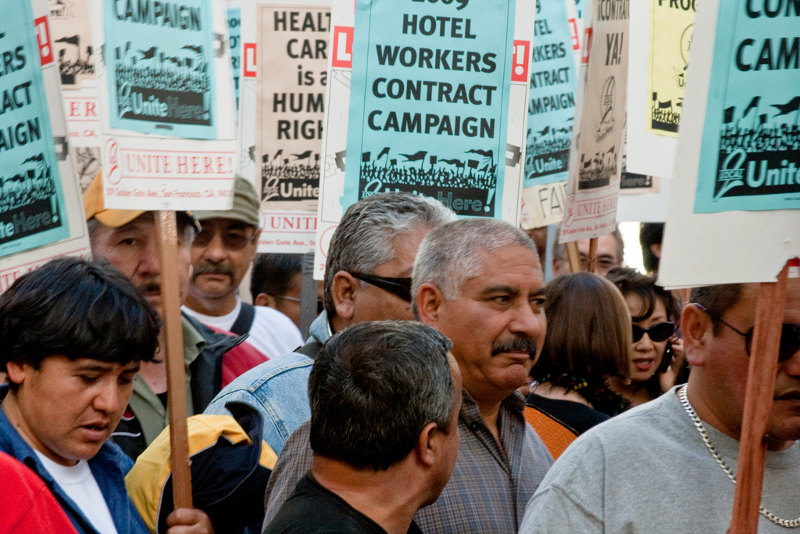 Photo by Troy Holden. The United States in line with the situation we have seen in many advanced capitalist countries has seen a significant drop in strike activity and trade union membership in recent years. However, the austerity packages being introduced are affecting public sector workers and this is provoking a reaction. Already, within the teachers’ unions we have the beginnings of rank and file opposition.
Photo by Troy Holden. The United States in line with the situation we have seen in many advanced capitalist countries has seen a significant drop in strike activity and trade union membership in recent years. However, the austerity packages being introduced are affecting public sector workers and this is provoking a reaction. Already, within the teachers’ unions we have the beginnings of rank and file opposition.
Ordinary teachers are suffering, as the cuts in spending begin to have an effect. While I was in the USA a teacher comrade explained to me how in Seattle within the teachers’ union an opposition caucus is developing at rank and file level. There is growing anger at what is being done to the education system and there is dissatisfaction at what the trade union leaders are doing. This is clearly a sign of what is to come in the future. There are three million teachers in the United States, a significant section of the workforce and they have no other option but to organize and fight.
Shortly after I left the news broke out of big movemenets among the nurses. More than 12,000 nurses began a one-day strike on June 10 at 14 Minneapolis area hospitals. The strike was over nurse-patient ratios and pension benefits. Meanwhile a judge in San Francisco intervened to stop a strike of 12,000 nurses from taking place at University of California hospitals and student health centers. Again, the dispute is over staffing levels.
In New York there was the strike at the beginning of June of 500 unionized janitors, groundskeepers and parking attendants who went on strike in a contract dispute at Co-op City housing development in northeast Bronx. It is a 35-building complex, that houses more than 50,000 residents, and it also produces up to 40 tons of refuse a day.
Now, in a situation like this one would imagine that the residents would be angry at their refuse not being collected. That is not what happened during this strike. The New York Times on June 2 reported that,
“Courtney Lumley, 36, who has worked at Co-op City for 16 years and lived there all his life, said: ‘I don’t want to see the place fall apart. We make the place look good for everybody. But if you freeze my wages, it’s going to be difficult to pay my rent’.”
The article went on to explain that,
“Hours after the strike began, many residents began carrying their own trash outside and performing other small tasks left undone. Despite the extra chores, most people said they sided with the union. They cited stingy managers, longtime support for labor and compassion for their neighbors.
“ ‘We have to be sympathetic to the workers because we are workers ourselves,’ said Vincent Matthews, 84, a retired Postal Service worker who moved to Co-op City in 1993. ‘I’m not with management when it comes to guys standing out here’.”
Looking for an alternative
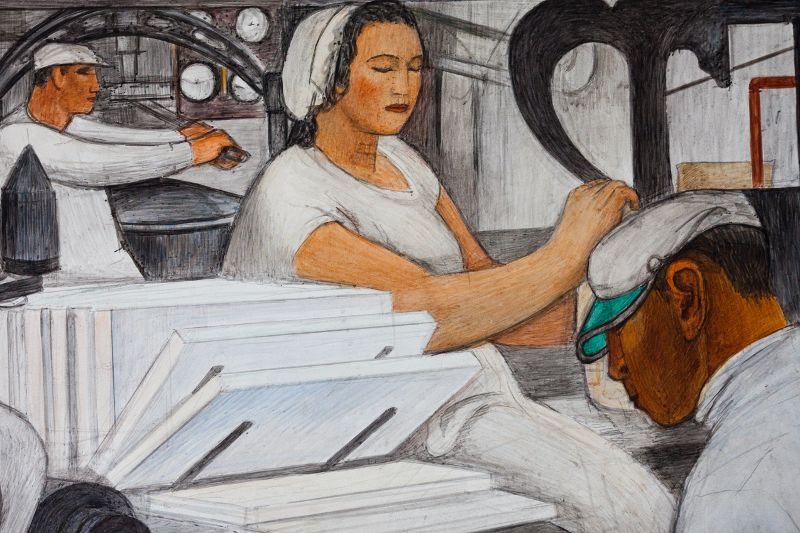 Part of a mural on Coit Tower from the 1930s depicting workers inspired by Diego Rivera. Photo by Thomas Hawk. The mood of residents of Co-op City is indicative of a mood that is spreading across the whole of the United States. US workers are no different from workers in the rest of the world. Very often on the left in many countries in the world there is a kind of crude anti-Americanism that sees everything American as bad. This is confusing the role of US imperialism with the US working class, when that class is in fact an ally of the workers of the world.
Part of a mural on Coit Tower from the 1930s depicting workers inspired by Diego Rivera. Photo by Thomas Hawk. The mood of residents of Co-op City is indicative of a mood that is spreading across the whole of the United States. US workers are no different from workers in the rest of the world. Very often on the left in many countries in the world there is a kind of crude anti-Americanism that sees everything American as bad. This is confusing the role of US imperialism with the US working class, when that class is in fact an ally of the workers of the world.
What I saw in just a couple of weeks in Canada and the United States shows quite clearly that the workers of these two countries are being squeezed more and more. The crisis of capitalism is being unloaded onto their shoulders. They won’t be able to take this for much longer. At some point they are going to fight back and in the process they will start looking for an alternative to this system.
I spoke to different groups of workers and youth and what struck me the most was how open they are to a Marxists analysis when it is explained in simple, clear language that brings across what is happening to the economy and how this impacts on ordinary working people.
One youth I spoke to, from California, who has recently joined the Workers’ International League, explained that what started him thinking were the financial difficulties his family had been through. This made him think that there must be another way of running society. Another comrade, from Texas, explained that what pushed him into socialist politics was seeing his mum lose her house to the banks a couple of years back.
The feeling I got was that the US working class is being pushed into a corner and soon it is going to come out of that corner fighting. When that happens the whole world situation will be shaken. So far, the US ruling class has been lording it over the world, sending troops all round the planet. Soon it will have to look into its own backyard.
Website of North American Marxists: Fightback (Canada), Tendance Marxiste Internationale (Quebec, French) and Socialist Appeal (USA)

